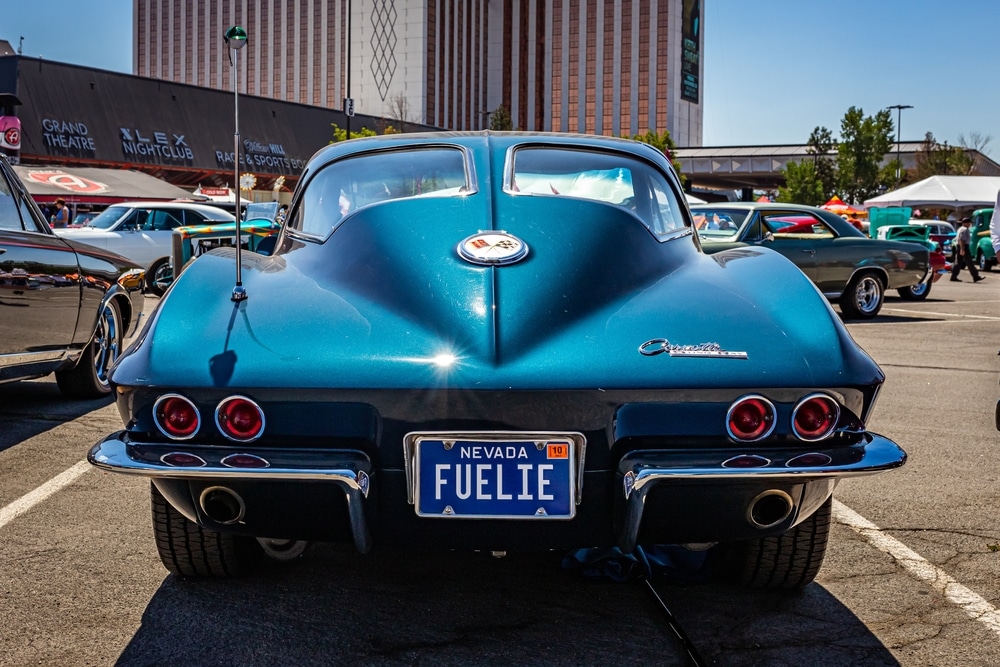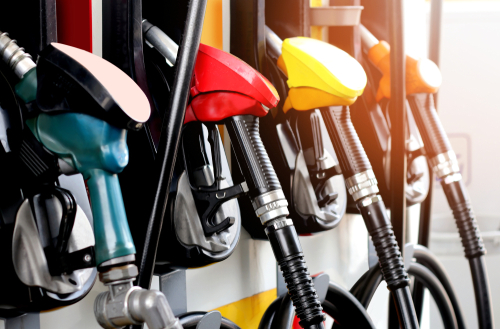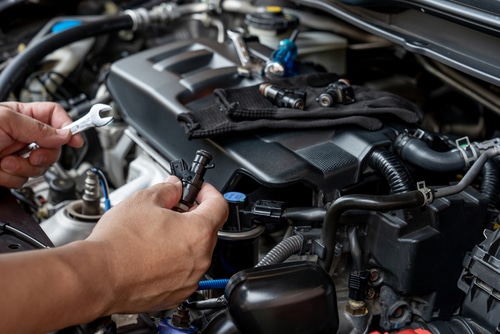Ever wondered what’s really in that 87 octane gas you pump into your car? You might be surprised to learn it’s not just gasoline. In fact, there’s a little something extra mixed in – ethanol.

Most 87 octane gasoline in the United States contains about 10% ethanol, a type of alcohol made from corn or other plant materials. This blend, known as E10, has become the standard for regular unleaded gas across the country.
Why add ethanol to your gas? It helps boost the octane rating and reduces emissions. But it’s not all sunshine and rainbows – ethanol can impact your fuel economy and potentially cause issues in older vehicles.
Curious about how this affects your daily drive? Let’s dive into the world of ethanol-blended fuels and what it means for your trusty ride.
Key Takeaways
- Regular 87 octane gas typically contains 10% ethanol, known as E10
- Ethanol boosts octane ratings and reduces emissions but may affect fuel economy
- Understanding ethanol content helps you make informed decisions at the pump
Understanding Octane Ratings
Octane ratings can be confusing, but they’re crucial for your car’s performance. Let’s break down what these numbers mean and how they relate to ethanol content in your fuel.
What Is Octane Rating, Anyway?

You’ve seen those big numbers at the pump, but what do they mean? Octane rating measures a fuel’s ability to resist “knocking” or “pinging” during combustion. It’s like your engine’s anti-knock juice.
The higher the number, the more compression the fuel can withstand before detonating.
In the U.S., you’ll typically see ratings of 87 (regular), 89-90 (midgrade), and 91-94 (premium).
But here’s a fun fact: that number is actually an average. It’s called the Anti-Knock Index (AKI), and it’s the mean of two different octane rating methods. Aren’t you glad you know that for your next trivia night?
Octane, Ethanol, and Your Engine
Now, you might be wondering, “What’s ethanol got to do with it?” Well, quite a bit actually. Ethanol is often blended with gasoline to boost octane ratings. In fact, most 87 octane gas in the U.S. contains about 10% ethanol.
This ethanol blend, known as E10, helps prevent engine knock and can improve performance in some engines. But it’s not all sunshine and rainbows. Ethanol has less energy content than gasoline, so you might see a slight dip in fuel economy.
For the adventurous types, there’s E85, a blend with up to 85% ethanol. It’s got a higher octane rating, typically 94 or above. Just make sure your car is flex-fuel capable before you go filling up with this stuff!
Ethanol’s Role in Gasoline
Buckle up, gearheads! We’re about to take a wild ride through the world of ethanol in your gas tank. You might be surprised to learn just how much this corn-derived additive impacts your daily drive.
From Corn to Motor – The Ethanol Journey
Ever wonder how that ear of corn at your summer barbecue ends up in your fuel tank? It’s quite the journey!
Farmers grow the corn, then it’s harvested and sent to ethanol plants. There, the kernels are ground into a fine powder and mixed with water to create a mash.
Enzymes are added to convert the starch to sugar, and yeast ferments that sugar into alcohol. The result? A potent brew that’s more suitable for your car than your stomach. After distillation and dehydration, you’ve got fuel-grade ethanol ready to mix with gasoline.
It’s like brewing beer for your car, minus the foam and questionable decision-making!
What’s the Mix? Ethanol Percentage in Gas
You might think your car runs on pure gasoline, but surprise! Most of the fuel you pump into your ride is actually a cocktail of gas and ethanol.
The most common blend you’ll encounter is E10, which contains 10% ethanol.
This ethanol boost isn’t just for kicks. It actually helps increase the octane rating of your fuel. That 87 octane you’re pumping? It starts its life at a lower octane and gets a boost from our corn-derived friend.
Some stations offer E15, with 15% ethanol. It’s like giving your car a little extra kick, but make sure your vehicle can handle it before you go wild at the pump!
E10, E15, E85 – Deciphering the Codes
Ever feel like you’re reading alphabet soup at the gas station? Let’s break down these cryptic codes.
E10 is your standard fare, found at most pumps across the country. It’s safe for all gasoline engines and helps keep your wallet happy.
E15 is the new kid on the block. It’s got a bit more ethanol and can be used in most cars made after 2001. Just check your owner’s manual before you take the plunge.
E85? Now we’re talking high-octane fun! This blend is mostly ethanol and is only for flex-fuel vehicles. If you’ve got one, you’re in for a treat – it’s like giving your car a double espresso!
Benefits and Drawbacks of Ethanol in Gasoline
Adding ethanol to your gas tank comes with some perks and quirks. Let’s take a spin through the pros and cons of this corn-derived fuel additive.
Boosting Performance and the Environment
Ethanol gives your ride a little extra oomph. It boosts the octane number of fuel, helping prevent that annoying engine knock. Your car’s performance might just thank you for it.
But wait, there’s more! Ethanol’s not just about power – it’s also a bit of an eco-warrior.
It burns cleaner than pure gasoline, reducing harmful emissions. The EPA gives it a thumbs up for lowering greenhouse gases.
Want to feel like you’re driving a renewable future? Ethanol’s got you covered. It’s a renewable fuel, which means you’re not solely relying on fossil fuels. Your grandkids might appreciate that one day.
Considering the Costs: Price and Efficiency

Now, let’s talk turkey – or in this case, corn.
Ethanol can be cheaper than regular gas, potentially saving you a few bucks at the pump. But don’t start planning that vacation just yet.
Here’s the rub: ethanol has lower energy density than gasoline. Translation? You might find yourself filling up more often. Your MPG could take a hit, especially with higher ethanol blends like E15 or E85.
Maintenance-wise, it’s a mixed bag.
Older cars might not play nice with higher ethanol blends, potentially leading to more trips to your mechanic. But for most modern vehicles, it’s business as usual.
Impact on Your Vehicle
Ethanol in your gas tank isn’t just a numbers game. It can have real effects on your trusty ride, from the engine’s purr to your wallet’s health. Let’s pop the hood and take a look.
Your Trusty Steed: Ethanol and Engine Compatibility
Hey there, gearhead! Ever wondered if your car’s feeling a bit tipsy from that ethanol cocktail?
Most modern cars can handle E10 fuel (10% ethanol) just fine, but it’s not a one-size-fits-all situation.
If you’re driving a flex-fuel vehicle, you’re in luck! These bad boys can guzzle up to 85% ethanol without breaking a sweat. But for the rest of us regular folks, too much ethanol can be like feeding your car a spicy burrito – it might not end well.
Higher ethanol content can lead to:
- Reduced fuel economy (yep, more trips to the pump)
- Potential corrosion in older fuel systems
- Possible engine damage in vehicles not designed for it
The Long Run: Ethanol and Vehicle Maintenance
Now, let’s talk about keeping your four-wheeled friend happy in the long haul.
First off, it’s hygroscopic – fancy word for “loves water.” This means it can attract moisture into your fuel system, potentially leading to corrosion. Not cool, ethanol, not cool.
On the flip side, ethanol can act as a cleaner, helping to remove deposits from your engine. It’s like a mini car wash for your cylinders!
Maintenance tips for ethanol-blended fuels:
- Use fuel stabilizers if storing your vehicle
- Replace fuel filters more frequently
- Keep an eye on rubber components in the fuel system
Ethanol and the Future of Fuel
Ethanol’s role in the fuel industry is evolving rapidly, with implications for both consumers and the environment. As you fill up your tank, you might wonder how this renewable resource fits into tomorrow’s energy landscape.
Steering Towards a Greener Tomorrow
You’ve probably noticed those stickers on gas pumps touting ethanol content. Well, buckle up, because ethanol’s taking you on a wild ride into the future of fuel!
The Renewable Fuel Standard is pushing for more ethanol in your gas tank, aiming to reduce our dependence on fossil fuels.
But it’s not all smooth cruising. While ethanol produces cleaner emissions and less particulate matter, it’s got a few quirks.
Your older car might not be a fan, and you might see a slight dip in fuel economy.
The Environmental Protection Agency is revving up efforts to promote low carbon fuel standards.
This means you could be seeing more E15 (15% ethanol) at your local pump. It’s like your gas got a shot of grain alcohol – cleaner burning, but maybe not as potent.
Frequently Asked Questions
Ethanol in 87 octane gas raises many questions for drivers. Let’s tackle some common concerns about ethanol content, its effects on vehicles, and where to find ethanol-free options.
What percentage of ethanol can you expect in a gallon of regular 87 octane gas?
Most 87 octane gas contains 10% ethanol, known as E10.
This blend is pretty standard across the board. You might feel like you’re getting shortchanged, but don’t worry – your car can handle it just fine.
Is there a difference in ethanol content between 87 and 91 octane fuels?
Surprisingly, there’s not much difference.
While you’d think premium gas would be ethanol-free, 91-93 octane gas often contains 5-10% ethanol. So much for paying extra to avoid the corn juice, right?
Can you fill up on 87 octane gasoline without any ethanol, and if so, where?
You can, but it’s like finding a needle in a haystack.
Some smaller gas stations or marinas might offer ethanol-free 87 octane. You’ll have better luck spotting Bigfoot than finding this at major chains, though.
Why might someone seek out 87 octane gasoline with no ethanol, anyway?
Some folks swear by ethanol-free gas for older cars or small engines. They claim it prevents corrosion and improves performance.
It’s like chicken soup for your carburetor – maybe it helps, maybe it doesn’t, but it makes you feel better.
How does the ethanol content in 87 octane gas affect your vehicle’s performance?
Ethanol can slightly reduce fuel economy due to its lower energy content.
But for most modern cars, it’s not a big deal. Your ride might lose a mile per gallon or two, but it won’t turn into a gas-guzzling monster overnight.
What’s the deal with ethanol, and how does it impact the quality of gas like 87 octane?
Ethanol is like that friend who means well but sometimes causes trouble.
It boosts octane ratings and reduces emissions, which is great. But it can also attract moisture and potentially cause issues in older engines or if left sitting for long periods.
